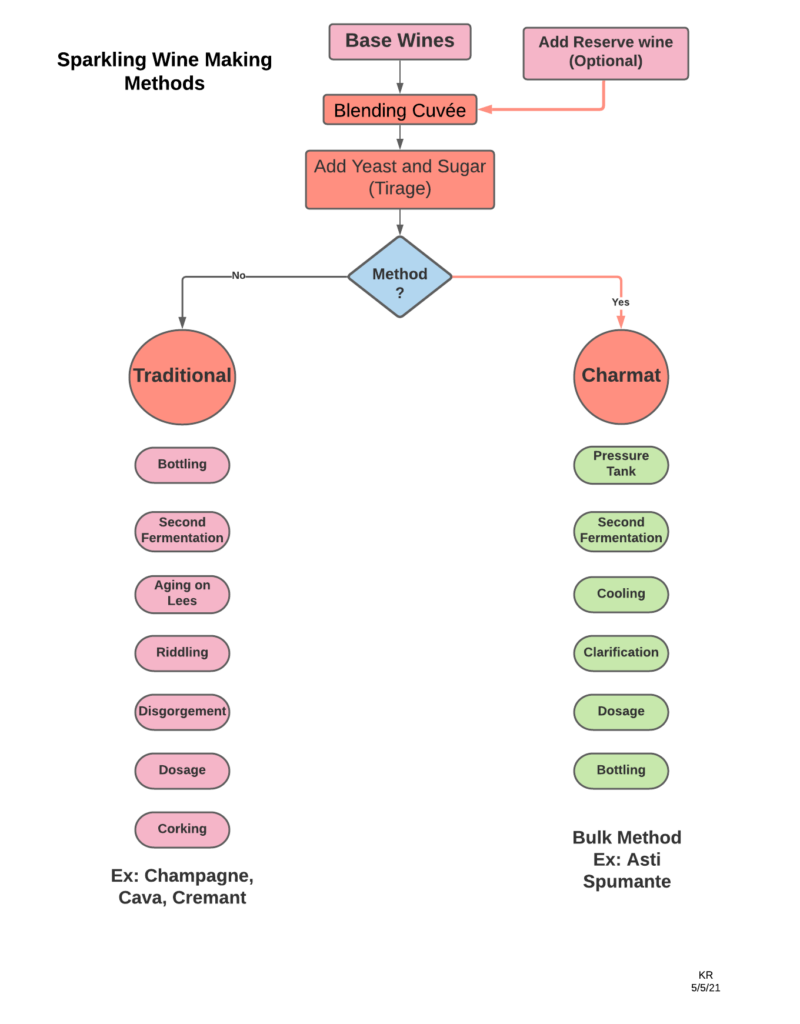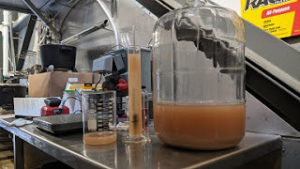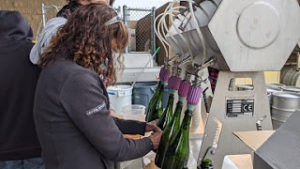Overview of Sparkling Wine Making
using Traditional Method
There are many methods to make sparkling wine – traditional (Méthode Traditionelle), Bulk (Charmat), Transfer, Transversage, and pet-nat (Petillant Naturale). Currently, I am making sparkling wine at the Allan Hancock College Winery in Santa Maria, CA using the traditional method under the mentorship of Prof. Alfredo Koch. It was such a fun experience working with the other students in the wine making program. Please refer to the figure below for the high level processes and steps employed in the traditional method. The Charmat method also known as “Bulk Method” is shown for cross reference.

1. Select Grapes: Several grape varieties are used in sparkling wines. The French champagne is made with Pinot Noir, Chardonnay, and Pinot Meunier with the principal varietal being Pinot Noir. In non-vintage wines, blending grapes can include additional varieties such as Chenin Blanc, Riesling, Semillon, Pinot Gris, etc., although care must be taken to maintain the homogeneous nature of aroma and flavor of the overall blend.
2. Harvest: Grapes are typically picked during early morning or at night to avoid oxidation. Unripe and bad berries or clusters are removed. Ideal Brix is between 17 to 21, pH 2.9 to 3.2 and TA 8 to 12g/L
3. Pressing is the next step. Whole cluster is preferred and pressing must be gradual and gentle to avoid the extraction of harsh tannins and phenolics. The French AOC has strict guidelines to govern the process.
4. Primary Fermentation: Yeast and Nutrients are added to the juice (Cuvee/base wine) to initiate the primary fermentation and it is typically done in a stainless steel tank.
5. MLF: At the wine maker’s discretion, optionally, malolactic fermentation of part of the base wine can be utilized to achieve balance of acidity, and aromas.
6. Blending: Another optional step in the sparkling wine making process to enhance the aroma profile.
7. Tartrate Stabilization: Cold Stabilization process can be used to manage and control the formation of potassium and calcium tartrates.
8. Clarification: Several filtration methods can be employed to clarify or fine the base wine.
9. Tirage: Yeast, nutrients, sugar, and adjuvant (riddling aid) are added to the cuvee to promote secondary fermentation, particularly, CO2 to create bubbles and pressure in the bottle while letting the fermentation occurs ‘on the lees.’ 

10. Biduling & Crown Capping: Upon completing the tirage the wine is bottled and fitted with a bidule stopper and crown cap closure.

11. Riddling: Regular and gentle riddling gradually moves the lees to the neck of the bottle and eventually into the bidule.
12. Disgorgement process is utilized to remove the lees and other sediments. Prior to disgorgement the neck of the bottle is chilled to 4 to 10 degree Celsius in glycol solution to reduce gushing and loss of wine and CO2 bubbles.
13. Dosage: The wine maker adds mixture of sugar, wine, distilled spirit, etc. to stylize and finish the final sparkling wine.
14. Corking and Wire hooding: After the addition of dosage the bottle is closed with a special cork and secured with the wire-hood.
15. Aging in the bottle: The wine is aged in bottles by placing them flat for several months or years before they are sold.
Ref:
Robinson, Jancis and Julia Harding, The Oxford Companion to Wine, Oxford University Press, 4th Edition, 2015
Peter Duncan and Bryan Acton, Progressive Wine Making, An Amateur Winemaker’s publication, 1971
Isabelle Legeron MW, Natural Wine – An introduction to Organic and Biodynamic wines made naturally. 3rd Edition